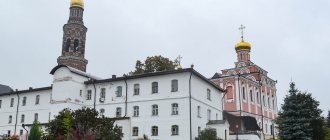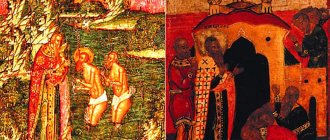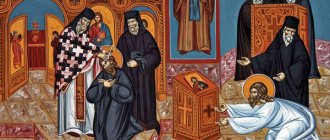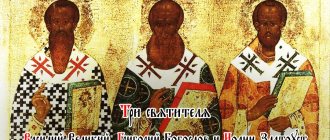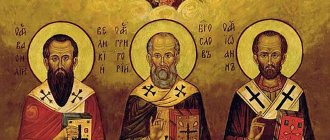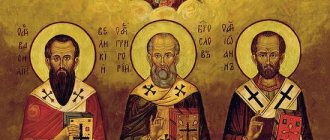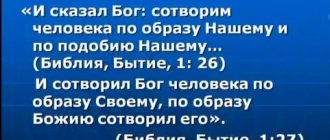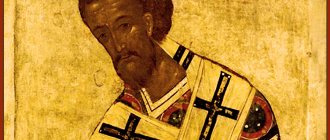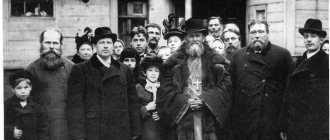Basil the Great is one of the three Cappadocian church fathers, along with Gregory of Nyssa and Gregory the Theologian. He is credited with the invention of the iconostasis and the composition of the Liturgy of Basil the Great, which is celebrated only ten times a year. Author of numerous sermons and letters (at least three hundred have survived).
Saint Basil the Great, Archbishop of Caesarea of Cappadocia, “belongs not to one Caesarea Church, and not only in his own time, not only to his fellow tribesmen, but to all countries and cities of the universe, and to all people he has brought and is benefiting, and for Christians he has always been and he will be a most salutary teacher,” said Saint Basil’s contemporary, Saint Amphilochius, Bishop of Iconium.
“Conversations for Six Days” sets out a Christian view of the question of how the world came into being, by whom and how it was created, what the universe is based on, and how the most important natural phenomena arise. Considering amazing examples from the life of living nature, Saint Basil draws conclusions that are edifying for the Christian soul.
Saintly activity
In 370 he became metropolitan of Caesarea. He actively fought against the Arian heresy, wrote books and preached. Due to the active struggle against the heresy of Arius, he faced a conflict with Emperor Valens. He was an adherent of this heresy and reduced the scope of the saint's activities. But Vasily was not at a loss and instead nominated his like-minded people to the episcopal posts - Gregory the Theologian and Gregory of Nyssa.
Soon the emperor was killed, but this no longer helped the saint. He died in 379 at the age of fifty.
see also
- Sisters of the Order of St. Basil the Great
- Monges Basilios
- Basilian Order of Saint John the Baptist
- Order of Saint Basil Melkites of Aleppo
| Control of authorities |
|
- Data: Q44258
- Multimedia: Basil of Caesarea
- Famous Quotes: Basil the Great
Liturgy of Basil the Great. What makes it special?
Ten times a year the order of the liturgy changes, and a special service is served, which is called the Liturgy of Basil the Great.
It is celebrated on the day of remembrance of St. Basil - January 14 according to the new style (January 1 according to the old style), as well as on the first, second, third, fourth and fifth Sunday of Great Lent, on Holy Thursday and Holy Saturday. Depending on what day of the week the celebration of the Nativity of Christ and the Epiphany of the Lord falls on, the Liturgy of Basil the Great is served either on the day of the holiday itself, or on the eve of the eve (Christmas Eve) of the holiday.
Usually, the first thing believers pay attention to is that the liturgy of Basil the Great is longer than the liturgy of John Chrysostom that is familiar to us. The chants sung at the Liturgy of St. Basil the Great seem to be longer. This happens because the prayers that the priest secretly says in the altar become longer, primarily the Eucharistic prayer. The choir, with its drawn-out performance, seems to fill the pauses in the service. And of course, the absence of the prayer “It is worthy to eat...” does not go unnoticed, instead of which one performs “He rejoices in You...”. Twice during the service believers hear the name of St. Basil the Great: during the proskomedia and on vacation.
external reference
- Wikimedia Commons has a multimedia category dedicated to Basil the Great
. - Saint Basil at catholic.net
- Saint Basil the Great in the Catholic Encyclopedia
- Sermons in Spanish of St. Basil
- “Do you know who Saint Basil was? » Bishop of Caesarea and Doctor of the Church.
- Translated texts
- San Basilio at Iglesia.org
- John Paul II. Apostolic letter Patres Ecclesiae (January 2, 1980) on the occasion of the 16th anniversary of the death of St. Basil.
- Benedict XVI presents Saint Basil
- Basil of Caesarea: Greek texts, at Wikisource.
- Basil of Caesarea: Epistles
.
Greek text with electronic index in the Perseus Project. By using the active " download
" label in the top right corner, you will receive help in English with the Greek dictionary in the text.
.
- Greek text in the Perseus project with the same characteristics.
Ratings
- Basilio el Grande. Greek patrolology
by J. P. Minier. - Nicolo Madonia (2006). Christ Always Living in Spirit: Foundations of Pneumatic Christology. Trinitarian Secretariat. pp. 171 et seq. ISBN 9788496488137.
- Basilio de Caesarea (2012). Archimiro Velasco, ed. Holy Spirit
. Editorial office of Ciudad Nueva. ISBN 9788497152587. - Xabier Picaza (2005). Inquiridion Trinitatis: Essential Texts on the God of the Christians. Trinitarian Secretariat. pp. 151 et seq. ISBN 9788496488038.
- Alfonso Perez de Laborda (2002). The World as Creation: A Theological and Philosophical Essay. Meeting. pp. 177 et seq. ISBN 9788474906653.
- Basilio de Caesarea (2007). Maria Alejandra Valdez, ed. Panegyric to the martyrs.
Sermon against passions . New town. ISBN 978-84-9715-125-2. - Basilio de Caesarea (2011). Francisco Antonio García Romero, ed. To young people.
Admonition to the Spiritual Son . New town. ISBN 978-84-9715-220-4. - Ramon Teja (1990). Early Christianity in Roman Society. AKAL publications. pp. 203 et seq. ISBN 9788470902307.
Bibliography
Opera of Basilica Magna, 1540
- José Antonio Loarte (1998). Treasure of the Fathers. Rialp publications. pp. 152 et seq. ISBN 9788432132162.
- Enrique Molina Coll (1995). Church Fathers: An Introductory Guide (5th edition). Word. pp. 253 et seq. ISBN 9788498401714.
- Gregorio de Niza (1995). L. F. Mateo-Seco, ed. Life of Macrina. For the glory of Basilio. New town. ISBN 84-86987-96-2.
- Averil Cameron (2001). Lower Roman Empire (284-430 AD). Meeting. ISBN 9788474906202.
- Franco Pierini (1993). A thousand years of Christian thought. Literature of the Church Fathers. San Pablo Editorial. ISBN 9789586075763.
